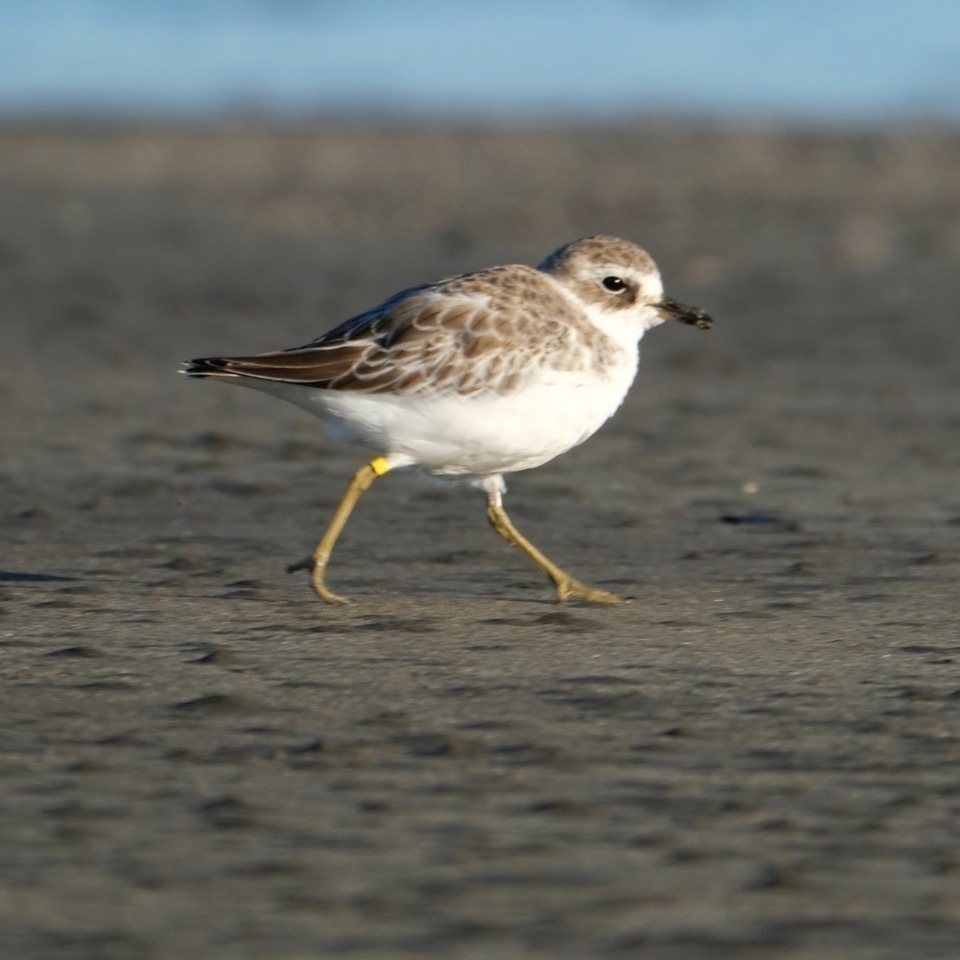
Sometimes, if you get a good enough look at a bird at Waikawa Beach, you might spot that it's wearing leg bands. This indicates that some researcher somewhere is interested in that bird.
Back in December 2023 I reported the above photo to the Banding Office and received this reply:
Thank you for reporting the finding of a banded bird, and for providing some stunning photos, which shows the metal band and coloured band so well. The details that we hold for this bird are:
Common name: Northern New Zealand Dotterel, Tūturiwhatu
Scientific name: Charadrius obscurus aquilonius
Metal band number: DP-10352 (left tibia)
Other markings: Coloured band – Yellow (right tibia)
Date banded: 23/01/2023
Age/Sex at first marking: Chick / Unknown
Banding location: North of Waitohu Stream, Ōtaki
Latitude/Longitude: -40.7271 / 175.1240
This bird has been nicknamed ‘Chip’ by the banders and it has a sibling called ‘Fish’ which wears a single green coloured band on its left tibia. These birds were banded as part of a project by the Ornithological Society of NZ (Birds NZ) to better understand the longevity, population dynamics and spatial distribution of non-passerines across the Wellington region.
This dotterel has more bands:

In the May 2024 edition of the Banding Office newsletter (PDF) they say:
Band resightings are a hugely valuable addition to any bird marking dataset and the Banding Office is very appreciative of every report that is submitted. … If a resighting is not reported to the Banding Scheme, this has various impacts:
- The bander may not be aware of the resighting, which isn't fair given that they have often gone to a lot of time and expense in marking a population for their research project. The Banding Office contacts project managers if a resighting for their project has been received.
- The bird is wearing a band for a purpose – to contribute to research. If the resighting is not verified or collated using a proper process then the effort of both the bander and the bird is wasted.
- The future will need reliable datasets. One day the data that we are all working on will be classed as 'historical'. Let us make sure that it is considered valuable due to its accuracy and completeness.
I guess I should report my photo from January this year … 😊